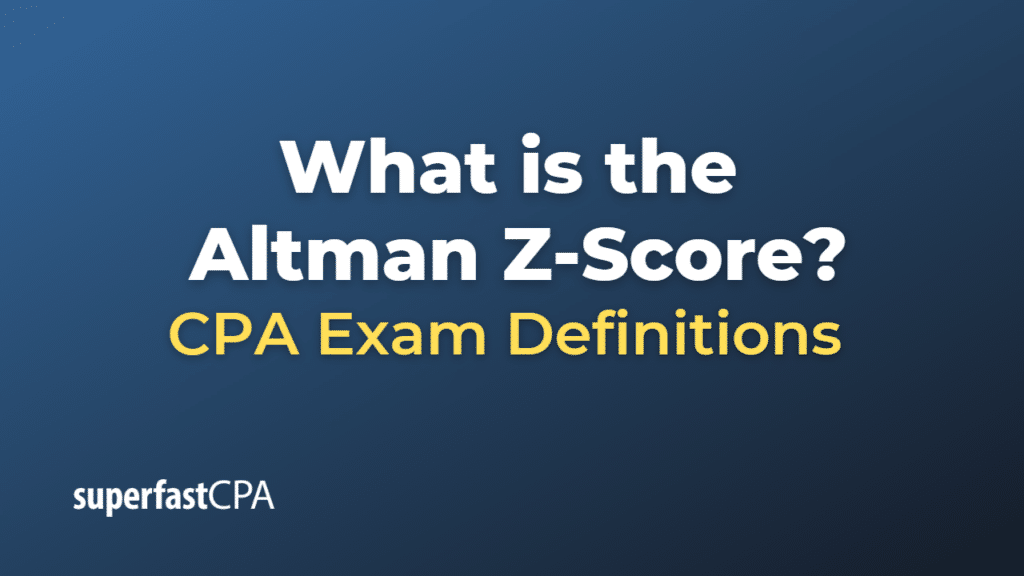Altman Z-Score
The Altman Z-score is a financial metric developed by Dr. Edward I. Altman in 1968. It is a credit-strength test that gauges a company’s likelihood of bankruptcy by analyzing its financial health. The Altman Z-score combines five financial ratios, each assigned a different weight, to produce a single score. The score helps to predict the probability of a company going bankrupt within a two-year period.
The five financial ratios used in the Altman Z-score calculation are:
- Working Capital / Total Assets
- Retained Earnings / Total Assets
- Earnings Before Interest and Taxes (EBIT) / Total Assets
- Market Value of Equity / Total Liabilities
- Sales / Total Assets
These ratios are then multiplied by their respective weights and summed to calculate the Altman Z-score:
Z = 1.2(A) + 1.4(B) + 3.3(C) + 0.6(D) + 1.0(E)
Where:
A = Working Capital / Total Assets
B = Retained Earnings / Total Assets
C = Earnings Before Interest and Taxes (EBIT) / Total Assets
D = Market Value of Equity / Total Liabilities
E = Sales / Total Assets
The resulting Z-score can be interpreted as follows:
- Z-score > 2.99: The company is considered to be in a “safe zone,” with a low probability of bankruptcy.
- 1.81 < Z-score < 2.99: The company is in a “grey zone,” with some risk of bankruptcy, but not critical.
- Z-score < 1.81: The company is in a “distress zone,” with a high probability of bankruptcy.
It’s essential to note that the Altman Z-score was initially developed to assess publicly traded manufacturing companies. Therefore, the model’s accuracy might not be as reliable when applied to other types of companies or industries.
Example of the Altman Z-Score
Let’s consider a hypothetical company, and we’ll calculate its Altman Z-score using the given financial information:
Working Capital: $150,000 Total Assets: $1,200,000 Retained Earnings: $350,000 Earnings Before Interest and Taxes (EBIT): $270,000 Market Value of Equity: $900,000 Total Liabilities: $750,000 Sales: $1,400,000
Now, we’ll calculate the five financial ratios:
A = Working Capital / Total Assets = $150,000 / $1,200,000 = 0.125
B = Retained Earnings / Total Assets = $350,000 / $1,200,000 = 0.2917
C = EBIT / Total Assets = $270,000 / $1,200,000 = 0.225
D = Market Value of Equity / Total Liabilities = $900,000 / $750,000 = 1.2
E = Sales / Total Assets = $1,400,000 / $1,200,000 = 1.1667
Now we’ll apply the weights to each ratio and sum them to calculate the Altman Z-score:
Z = 1.2(A) + 1.4(B) + 3.3(C) + 0.6(D) + 1.0(E)
Z = 1.2(0.125) + 1.4(0.2917) + 3.3(0.225) + 0.6(1.2) + 1.0(1.1667)
Z ≈ 0.15 + 0.408 + 0.7425 + 0.72 + 1.1667
Z ≈ 3.1872
Based on this Altman Z-score of 3.1872, the hypothetical company is in the “safe zone,” indicating a low probability of bankruptcy. Keep in mind that this example is for illustrative purposes, and the Altman Z-score should be used with caution when assessing companies in different industries or with unique financial structures.












